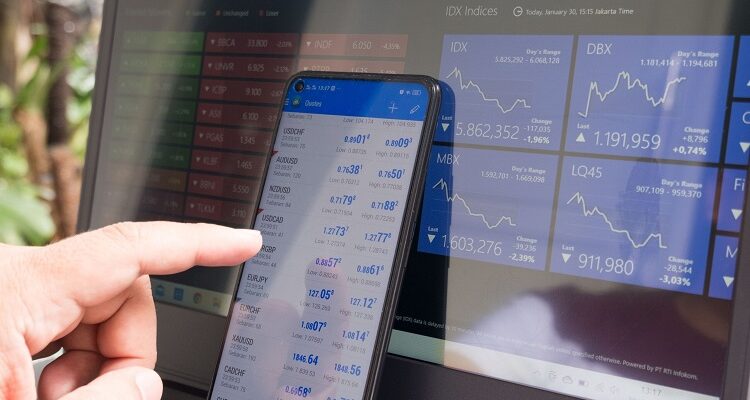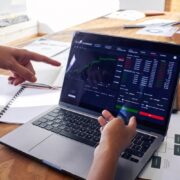Contracts for Difference (CFD) trading has become increasingly popular in recent years, especially in the United Arab Emirates (UAE). CFDs allow traders to speculate on the price movement of various financial assets, ranging from currencies, commodities, indices, stocks, and more. There is no doubt that one great thing about CFD trading is its speculative nature – traders do not have to own the underlying instrument to potentially benefit from its price movements in the market.
If you are looking to trade CFDs but do not know where to start, you can read on and learn more. Without further ado, let’s get started.
Table of Contents
How does CFD trading work?
When a trader CFD trades, they essentially purchase a contract from a CFD provider to trade the difference between the opening and closing prices of an asset.
For example, if you believe the price of gold will increase, you enter into a CFD contract with a provider to buy a certain amount of gold at the current market price. If the price of gold does increase, you can sell the CFD at the new, higher price, and you can make a profit. If the price of gold decreases, you would sell the CFD at a lower price and incur a loss.
Why trade CFDs?
There are many reasons why people may trade CFDs. They are:
You can trade on margin
Firstly, you can trade on margin, which means you can open a position using only a small amount of funds. The rest of the funds can be supplemented by your broker or provider. This is called leveraged trading, and it can increase your potential profits. However, it can also magnify your potential losses.
You can access a wide range of markets
CFD trading is available in a wide range of markets, ranging from currencies, stocks, indices, and commodities. This means you can diversify your portfolio easily and take advantage of different market conditions.
You can go long or short
When trading CFDs, you can go long or short, which means you can find opportunities in both bullish and bearish markets. This flexibility makes it easy for traders to potentially profit from any market trend.
You can use risk management tools
Finally, traders can use a wide range of risk management tools when they trade CFDs, including stop-loss orders, guaranteed stop-loss orders, take-profit orders, and more. This can help traders better plan their investment strategy and potentially meet their overall financial goals more easily.
How to trade CFDs
If you are keen to learn how to CFD trade, you can do so by opening an account with a local broker in the country or an international one with a local presence. You should make sure the broker offers CFD trading services and that they offer you the instruments on which you want to speculate. Different CFD providers may also provide different platforms and trading fees, so you should do thorough research and ensure you find the provider you want to use before you open an account.
Once you have chosen a broker, you can open a CFD trading account. This process usually involves verifying your personal and financial information, such as your name, address, and employment details or financial statements.
Then, you can begin to deposit funds. Depending on your broker, you may have several deposit methods from which to choose, such as credit cards, bank transfers, and online payment systems.
When you have funded your account, you can choose your instrument. CFDs are available for a wide range of financial instruments, and you should always choose one you are comfortable trading with. Make sure you understand what drives price fluctuations in the markets. You can then observe how the market is performing and decide on the direction in which you want to trade. If you think an instrument price will appreciate, you will go long. Conversely, if you think it will depreciate, you will go short.
You can then place your CFD trade. Enter the amount you want to trade and set stop-loss orders as needed, as well as other risk management strategies you may have. Once your trade is over, monitor the markets to close out your order when you want, or set an automatic close order.
Is CFD trading regulated in the UAE?
Before you start trading, it is important to note that CFD trading is regulated in the UAE, and you should only open an account with a licensed broker. Below, let’s take a deeper look at what this regulation is and means.
The UAE Securities and Commodities Authority (SCA) is the regulatory body responsible for overseeing financial markets in the country. In 2017, the SCA issued new regulations for CFD trading, which include restrictions on leverage, mandatory negative balance protection, and the prohibition of bonuses and other incentives offered by brokers to attract clients.
On top of that, the SCA requires all CFD brokers to be licensed and registered with the authority to begin its business. This provides a level of protection for traders in the country, as licensed brokers are required to adhere to strict regulations and guidelines set by the SCA.
Is there capital gains tax in the UAE?
Many traders who participate in trading may have heard of capital gains tax. This is the tax traders must pay on the profits they gain when they trade stocks and other assets. There is currently no requirement for CFD traders to pay capital gains tax on their potential profits when they trade in the UAE.
However, it is important to note that laws can change over time, so traders should stay up to date with any changes in regulations that may affect their trading activities.
Final words
It is important to note that CFD trading can potentially help traders make a profit, but it is associated with significant risks. One of them is the potential for substantial losses from the markets going against your predictions. Another risk comes from the use of leverage. While leverage can help you potentially increase your profits by a significant amount, you should also note that when the markets do not go your way, leverage can cause you to lose more than the amount of money you had invested in the first place.
Therefore, no matter which asset you trade or how much money you put in your position, you should fully understand the risks involved in CFD trading before you attempt to trade live. You should also understand what moves the markets on which you speculate, and you should have a thorough understanding of how CFD trading works. When in doubt, always have an exit strategy planned well in advance, so you can close out your positions should something go wrong.
If you are unsure how you can create a risk management plan by yourself, you should consult with a financial advisor before engaging in CFD trading to make sure you are making informed investment decisions for your own protection.












Comments